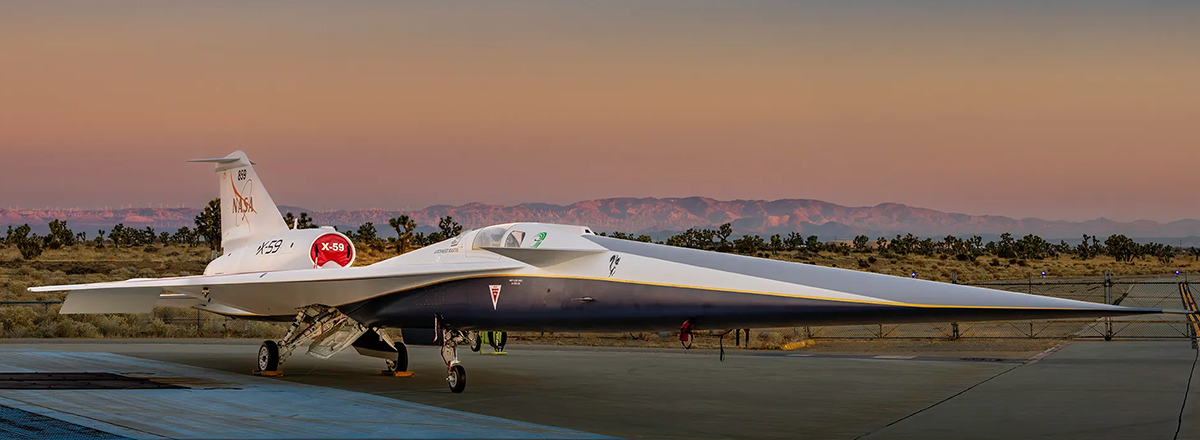NASA and Lockheed Martin Unveil Groundbreaking X-59 Supersonic Aircraft
Expected to fly at 1.4 times the speed of sound, equivalent to 925 miles per hour, the X-59 incorporates cutting-edge design and technologies to minimize the sonic disturbance.

NASA, in collaboration with Lockheed Martin, introduced the world to the innovative X-59 experimental supersonic aircraft. This groundbreaking plane promises to revolutionize air travel by eliminating the disruptive sonic booms typically associated with supersonic flights, making it a remarkable achievement in aviation technology.
This is not a render.
— Lockheed Martin (@LockheedMartin) January 12, 2024
This is the X-59, a single-seat X-plane aiming to reduce the sound of the sonic boom to a mere thump. It opens the possibility for commercial supersonic flights over land, which has been prohibited since 1973. Be on the lookout for first flight! pic.twitter.com/7MZQZoyVjG
The X-59, a part of NASA's Quesst mission, aims to provide vital data to reconsider regulations that have, for half a century, prohibited commercial supersonic flights over land due to the deafening noise pollution they generate. Expected to fly at 1.4 times the speed of sound, equivalent to 925 miles per hour, the X-59 incorporates cutting-edge design and technologies to minimize the sonic disturbance.
With the X-59, NASA plans to open up new commercial markets for American companies by demonstrating the possibility of quiet supersonic travel over land, eventually benefiting travelers worldwide.
The aircraft's unique design includes a distinctive tapered nose that breaks up shockwaves, eliminating the characteristic sonic boom.
A noteworthy aspect of the X-59 is its cockpit configuration, situated almost halfway down the length of the aircraft, without a forward-facing window. Instead, NASA's Quesst team has devised the eXternal Vision System, featuring high-resolution cameras feeding a 4K monitor in the cockpit, offering pilots an augmented-reality view of their surroundings.
Following the completion of rollout, the Quesst team will conduct integrated systems testing, engine runs, and taxi tests to prepare for the X-59's inaugural flight, scheduled later this year. Afterward, the aircraft will undergo a series of flight tests.
NASA's objective is not only to gather data on the aircraft's noise levels but also to gauge public perception by flying the X-59 over selected U.S. cities and collecting valuable input. This data will be shared with regulatory bodies like the Federal Aviation Administration to seek approval for commercial supersonic flights over populated areas, with the ultimate goal of making aviation more sustainable and enabling faster travel.

